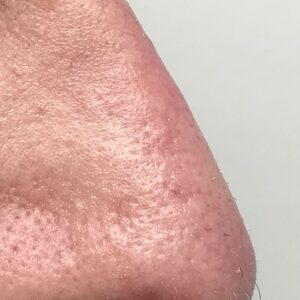Rhinoplassty
Rhinoplasty-all you need to know
Choosing between having a surgical or a non-surgical rhinoplasty can sometimes be not straightforward. Here is an overview of both techniques to help you understand the differences in procedures, downtime and risks.
Overview
A Rhinoplasty, or a nose job, is surgery that changes the shape of the nose. It can be done surgically or non-surgically.
Anatomy of the nose
The upper portion of the structure of the nose is bone, and the lower portion is cartilage. There is a layer of fatty tissue as well at the tip of the nose. Rhinoplasty can change bone, cartilage, fat or all three.
Why should I have a rhinoplasty
A rhinoplasty is done to repair deformities from an injury, correct a birth defect, improve breathing difficulties or simply for aesthetic reasons. .
Preparing for the surgery
- Stop medications like NSAIDS (aspirin, ibuprofen) two weeks before surgery
- Stop smoking one month before surgery
- Stop herbal remedies two weeks before surgery
- Arrange to have someone at home to look after you after the surgery
- Have a one week shopping at home
- Wash your body and hair the night before the surgery
- Have a good night sleep before your surgery
During the surgery
Rhinoplasty requires local anesthesia with sedation or general anesthesia, depending on how complex your surgery is and what your surgeon prefers.
The incision for a rhinoplasty may be done inside your nose (a closed rhinoplasty) or through a small external cut at the base of your nose (an external rhinoplasty). We will then work on the bone and cartilage to reshape the nose. Sometimes we may use cartilage taken from deeper inside your nose or from your ear, or from the ribs. The wall wall between the two sides of the nose (septum) is bent we can remove it to correct the breathing problem.
Splints are sometimes needed inside the nose and on the outside of the nose. The ones inside are kept overnight while the on outside is kept for two weeks.
After the surgery
After the surgery you need to rest in bed with your head raised higher than your chest, to reduce bleeding and swelling. Your nose may be congested because of swelling or from the splints placed inside your nose during surgery.
Slight bleeding and drainage of mucus and old blood are common for a few days after the surgery or after removing the dressing.
To further lower the chances of bleeding and swelling, it is advisable to follow the instructions below:
- Avoid strenuous activities such exercise.
- Take baths instead of showers while you have bandages on your nose.
- Not blow your nose.
- Eat high-fiber foods, such as fruits and vegetables, to avoid constipation. Constipation can cause you to strain, putting pressure on the surgery site.
- Avoid extreme facial expressions, such as smiling or laughing.
- Brush your teeth gently to limit movement of your upper lip.
- Wear clothes that fasten in the front. Don’t pull clothing, such as shirts or sweaters, over your head.
- Don’t rest eyeglasses or sunglasses on your nose for at least four weeks after the surgery, to prevent pressure on your nose. You can use cheek rests, or tape the glasses to your forehead until your nose has healed.
- Use SPF 30 sunscreen when you’re outside, especially on your nose. Too much sun may cause permanent irregular discoloration in your nose’s skin.
- Don’t put anything such as ice or cold packs on your nose after surgery as your skin might be numb and can cause a frost burn.
Results
Do not expect the final result until a 18 months after surgery. A lot of swelling will go down over this time.
Risks
- Bleeding
- Infection
- An adverse reaction to the anesthesia
- Difficulty breathing through your nose
- Permanent numbness in and around your nose
- The possibility of an uneven-looking nose
- Pain, discoloration or swelling that may persist
- Scarring
- A hole in the septum (septal perforation)
- A need for additional surgery
Non-surgical rhinoplasty is an aesthetic treatment that’s recently risen in popularity with women and men alike. A filler is injected into the nose to reshape. Different materials can be used to reshape the nose, the post popular being either hyaluronic acid or fat, or by injecting botulinum toxins to release the muscles.
How can injections reshape the nose?
By carefully injecting dermal filler above and below the dorsal hump or the bump on the nose, we can convert the nose profile to a straight profile. By manipulating the filler we can also make the nose look narrower. Working on the tip of the nose, we can make it look lifted, smaller and more refined. By injecting botulinum toxin (like Botox), we can lift the tip of the nose by relaxing a muscle called the depressor nasalis, the muscle which continuously pulls the nose down.
What are the benefits of this treatment over traditional rhinoplasty?
A non-surgical rhinoplasty is not an alternative to a rhinoplasty. It can achieve similar results, but they are not permanent. It also does not address structural changes, breathing problems and functional problems.
The benefits of an non-surgical rhinoplasty is that it gives an instant change to the nose, without the downtime. It is also possible to envisage what the nose could look like with a surgical rhinoplasty.
What if you don’t like the results of the non-surgical version?
A non-surgical rhinoplasty is not permanent is the right filler is used. Hyaluronic acid fillers are the safest to use because they can be dissolved. Other types of fillers cannot.
Why are filler in the nose so popular now?
Non-surgical rhinoplasties provide a quick and convenient way to reshape the nose for many patients, especially those that do not have the time to have surgery and for those that are worried about surgery.
How is a non-surgical nose job procedure actually do?
The procedure is done is a clinic setting and takes around 10 minutes to do. After cleaning the skin, area is planned. The injection of the filler into the nose to achieve the desired effect then follows.
Does the procedure hurt?
Most people find the procedure not painful or have little discomfort. It is in general very well tolerated.
How long do the results of a non-surgical nose job usually last?
The results of a non-surgical rhinoplasty vary depending on the type of filler used, but one should expect it to last between 12 to 18 months.
How safe is a non-surgical nose job?
In the right hands the procedure is safe, however in the untrained hands it can be very dangerous. We only use hyaluronic acid or fat in our treatments, as the body sees these as natural.
Are there any side effects?
- Infection
- Bleeding
- Lumpiness
- Asymmetry
- Granuloma
- Skin necrosis
- Breathing problems
Learn More
Rhinoplasty
A Rhinoplasty, also known as a nose job, is a procedure on the nose for functional or aesthetic reasons. It can be surgical or non-surgical depending on what needs to be addressed. Non-surgical rhinoplasty is done using fillers to shape the nose. Surgical rhinoplasty can be open or closed procedures.



Benefits of a Rhinoplasty
If the rhinoplasty is done for functional reasons is done, usually benefits revolve around improvements in breathing. If aesthetic concerns, such as bridge, width, tip or projection, these can be addressed at the same time if required. The benefits of a non-surgical rhinoplasty is that it can address some of these aesthetic reasons without surgery.
The procedure
A surgical rhinoplasty is performed under general anaesthetic. It can be done as a day case procedure or an overnight stay depending on the complexity of the case. This involves making an incision in the base of the nose around 3mm in length, and hidden from view. For non-surgical rhinoplasty we use hylauronic acid filler injections to reshape the nose.
A Video of how Rhinoplasty is done

Start with a virtual consultation
Options
A surgical rhinoplasty can be done open or closed. With the closed technique the incision is inside the nose, while with an open technique the incision is through the skin. We can do more through the open technique. Sometimes we have to borrow some extra cartilage from the ear or bone from the ribs to reconstruct the nose.
A non-surgical rhinoplasty involves using hylauronic acid fillers injected under the skin to reshape the nose. The filer dissolves over 2 years and the process can be repeated to maintain the shape.
After Care
After a surgical rhinoplasty you will need to rest for at least 48 hours. Do not bend, strain or smoke You might need to use saline spray or nasal decongestants to help you with breathing for a few days. An internal splint is removed between 1 to 10 days depending on what has been done. Bruising might take up to 2 weeks to settle and overall swelling might take up to 18 months.
A non-surgical rhinoplasty it is important not to sleep face down for 48 hours and avoid hot saunas for 48 hours to maintain the shape.
Reviews
What our patients say
HealthFormation

is a non-surgical rhino permanent
Fillers used to create non-surgical rhinoplasties dissolve over time, and can take up to 2 years to go.
is the scar of a rhinoplasty visible
The scar from a rhinoplasty is hidden under and inside the nose, making it not visible. There is no scar in a non-surgical rhinoplasty.
can you set my nose straight
If you had an injury and broken your nose, we can set the nose straight surgically or we can use fillers to camouflage the nose making it seem straight.
Choose Your treatment
Surgical Aesthetic
£7999
Surgical Functional
£9999
NonSurg + Chin
£800
 BEFORE
BEFORE
 AFTER
AFTER
 BEFORE
BEFORE
 AFTER
AFTER
 BEFORE
BEFORE
 AFTER
AFTER
 BEFORE
BEFORE
 AFTER
AFTER
Frequently asked questions
You will need around 1 week of work at least. There might some packs in the nose to be removed in a day or two. Bruising will settle in 2 weeks. The scar will heal over 1 week with some sutures to remove in 10 days. The fading of the scar will then continue over next few months. Swelling takes time to settle, up to 2 years.
On occasions we would need some extra cartilage to support or rebuild the nose. This can be harvested from the nose septum, but on occasions from the ears or the rib cage. This will be discussed with you at the consultation.
A final result will be seen in 2 years, however initial results can be seen within a few weeks.
Infection, bleeding, unfavourable scarring, asymmetry, swelling, breathing problems, snoring, nasal collapse, changes over time, revision surgery, general anaesthetic risks, DVT/PE, blindness, dissatisfaction.
do you have more questions about rhinoplasty?





Get in Touch
+44 800 772 3501
hello@cosmeticaestheticplasticsurgery.com

